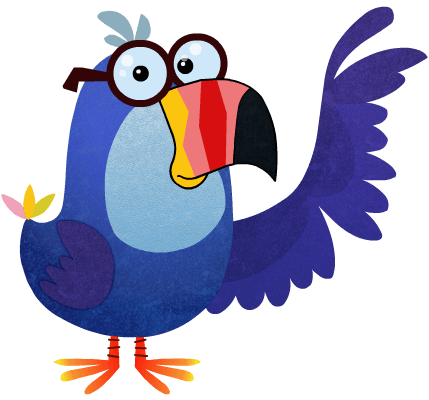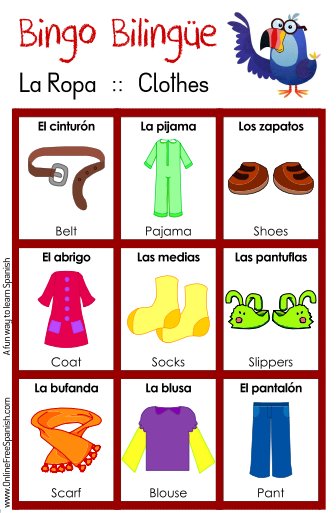Kids of all ages love playing games, and everyone loves Bingo! Playing games help children develop important social and cooperative skills and “Bingo Bilingüe” makes learning exciting.
“Bingo Bilingüe” is played the same way as traditional bingo game, but with this game the kids have the opportunity to learn, review and use new Spanish vocabulary, while “Bingo Bilingüe” keeps them glued to the learning activity.
We have 6 categories for “Bingo Bilingüe” bichos, body parts, clothes, numbers, sea life and wild animals, each board is 3×3 picture bingo and each board use 8 pictures from a theme that you select.
When you click over you selection you will have to print one page with the 16 graphics for play the bingo, 8 cartoons to 8 players and one page with bingo chips.
You may want to laminate the bingo cards after you print them. You can also print the call sheet on heavier paper or glue the page to a piece of cardboard before you cut the call pieces out. These two suggestions will allow you to use these bingo cards for many, many games.
Have fun!
Let us know your opinion about this activity using the rating and comments located right underneath of them.
Gracias,
The team of
OnlineFreeSpanish.com
A fun way to learn Spanish
Especially for kids of all ages.
facebook: onlinefreespanish
twitter: freespanish
youtube: onlinefreespanish


be careful with the bingo, there is a mistake, pijama is masculine not feminine.
Thanks Carmen, according with “La Real Academia Española” in the meaning of the word “pijama” they use the acronym u.t.c.f. (use too as female) http://lema.rae.es/drae/?val=pijama
Hola Carmen, gracias por traer este tema a colación, ¿Cómo se dice, el pijama o la pijama? En algunos países de Sur América decimos la pijama o también se dice la piyama, y asi lo reconoce La Real Academia Española cuando usa la abreviatura “ú.t.c.f. (úsase también como femenino) en su definición, http://lema.rae.es/drae/?val=pijama
Gracias por tu comentario.
gracias por la informacion, siempre se aprende algo. en Espana nunca lo habia oido como femenino.